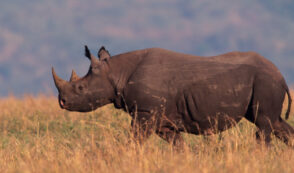Vegan Diets and the ‘Cruelty-Free’ Commute

The Humane Society of the United States published a new video online this week, showing HSUS vice president John Grandy and a gaggle of other HSUS staffers emptying a forest of all its animals. On camera (natch), they’re all busily moving wildlife—frogs, rabbits, woodchucks, squirrels, and the like—from a patch of woods near HSUS’s Maryland office building to another area. Why? Because a new freeway interchange will soon be built there.
And good for them, we suppose. There’s something admirable about saving Kermit and Thumper from a future date with the bulldozer. But it does raise an interesting question: If HSUS cares enough about every last hop-toad, garter snake, and chipmunk to re-home countless woodland critters, how come the animals’ brothers and sisters on U.S. soybean and broccoli farms don’t rate the same sort of sympathy?
For a variety of reasons, vegans (including those who run HSUS) hate the idea of killing animals for food. The biggest reason, though, is because they’ve convinced themselves it’s unnecessary—that the human race can survive nicely without imposing any casualties on the animal kingdom. This is why HSUS big-shots like Wayne Pacelle, Michael Greger, and Paul Shapiro will never dine on veal scaloppini: Even if the veal calves in question were raised at the Ritz-Carlton, vegan evangelists seem to think a diet of lentils and tofu is “kinder.”
Nonsense.
A dietary “no-kill” philosophy may be compelling in theory, but it runs into a logical brick wall in practice. Farmers simply can’t grow soy, alfalfa, wheat, and all the other vegan-friendly food crops without killing countless animals. Countless living, breathing creatures are routinely cut down on conventional and organic farms alike, losing life and limb to plows, tractors, combines, pickers, mowers, gins, threshers, and all manner of other equipment that most of us never see.
Here’s a challenge for HSUS’s videographers: Put a camera on the business end of a John Deere wheat combine for a week, and see how much blood the machine sheds.
Oregon State University animal science professor Steven Davis first wrote in 2002 that harvesting crops to feed vegans kills millions of animals. Research determined, for example, that mowing an alfalfa field killed up to half of the resident vole population. Feeding an all-vegan America, it turns out, would still require the deaths of billions of animals every year.
It’s for this reason that a vegan diet, by Davis’ calculation, fails the “Least Harm Principle.” Instead, he writes, we should eat larger animals instead of smaller ones and let them forage pastures. (Think grass-fed beef and dairy.) This would actually reduce the total number of animals killed annually in our food system by 300 million, when compared with a vegan diet.
Davis’ analysis probably has some limitations, but his point is worth thinking about: Animals must ultimately die for people to live. There’s no getting around it, even though it upsets simplistic philosophies like those of HSUS and other animal rights groups.
The noted vegan philosopher Tom Regan is having none of this, but his moral high ground is a bit quicksandy. “The real question,” Regan says, “is whether to support production systems whose very reason for existence is to kill animals. Meat eaters do. Ethical vegetarians do not.”
Of course, this is nonsensical hyperbole. If dairy farmers solely existed to kill cows, milk wouldn’t exist. And why should people’s intentions be more important to a vegan than how many animals die? Is the gruesome death of a free-range field mouse in a soybean harvester really preferable to the slaughter of a pastured cow?
Which brings us back to those woodland creatures in the new HSUS video. Just as daily nourishment is a fact of life, the hour-long commute (at least for those who live near our nation’s capital) has joined the proverbial “death and taxes” in the triumvirate of the undeniable.
Fish gotta swim, birds gotta fly, people gotta eat, and rush hour’s gotta suck. (And mosquitoes gotta hit the windshield too, we suppose.)
The last time we checked, HSUS’s “factory fundraising” headquarters had a good-sized parking lot. Which means that Grandy and the rest of his forest-clearing posse are just as responsible as the rest of us for the unintended consequences (to animals) of our growing highway system.
Wouldn’t it be nice if they stopped pretending they were above it all?



